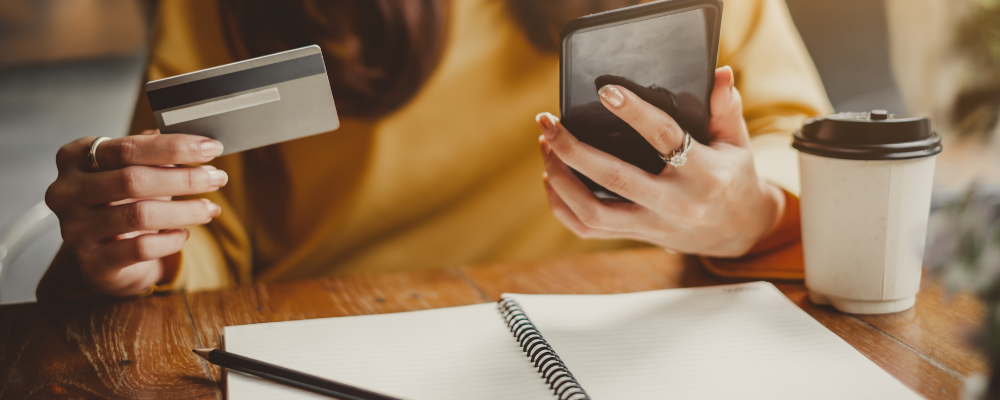During the holidays, you don’t really want to think about budgeting and being careful about what you spend your money on. This is time when you want to splurge on luxurious gifts, scrumptious food, and lavish stocking stuffers for every family member, friend, and colleague on your list.
Unfortunately if you’re not careful, these generous intentions can lead to holiday credit card debt by the time the New Year rolls around. What makes it worse is that credit card debt is especially difficult to pay down. Credit cards carry among the highest interest rates among all types of debts. The average annual percentage rate is more than 16%.
If you find yourself in credit card debt in 2022, you must take immediate steps to pay it off. Leaving your debt unpaid for too long will make it even more difficult to pay off. The late fees and interest rates will keeping adding to the outstanding. Unpaid debt will also damage your credit score and increase the cost of future borrowing.
Here’s what you can do to clear or at least limit your holiday credit card debt.
1. Determine How Much Debt You’ve Accumulated
Just opening your credit card bills to check the balances can be a scary thought. You know it’s a lot but you’d rather not know how much. The truth is, sticking your head in the sand will only make matters worse. Ignoring the debt won’t make it go away. You have to be proactive if you want to pay down your credit card debt. And for that you have to first know how much you owe.
Take a deep breath and open up those check card bills. Alternately, check your statements online. Add up all of the balances to get an actual figure of much holiday debt you have to pay down.
2. Figure Out Your Budget
After checking your credit card statements, you now know how much you owe in total. Before making a plan to pay off the debt, you have to figure out how much you can afford to pay back every month. For that you have to know how much money you have coming in every month and how much goes towards essential expenses.
Use budgeting software or create a spreadsheet to calculate how much of your income goes towards essentials such as utilities, rent, groceries, and other recurring payments. This will give you a better idea of how much you have left to pay off your credit card debt.
3. Create A Debt Payoff Plan
You know how much you owe and how much you can afford to pay towards paying it off. Now it’s time to create a debt payoff plan. Basically, a debt payoff plan should break down the total amount that you owe into smaller, manageable amounts over a specific time period.
Here’s how a debt payoff plan helps. If you have a lot of credit card debt, just seeing the huge number can make it seem impossible to pay down. Breaking it down into smaller amounts seems so much more manageable. Let’s say you have $2,000 holiday credit card debt. Wondering how you’re going to pay that back can leave you feeling overwhelmed, stressed, and panicked. You know that you can’t afford to pay $2,000 in one go. However, if you spread those payments over a few months, suddenly it seems doable and less stressful.
4. Put Your Plan In Action As Soon As Possible
The time to start is immediately after you’ve created your debt payoff plan. Don’t wait until next week or next month. Interest accrues daily on the outstanding amount. The longer you take to start paying down the debt, the more you’ll pay by way of interest.
Aim to start early and make more frequent payments. This is the best way to lower the interest on the debt. It will also help you pay off the debt earlier rather than later.
- Debit The Payments Directly From Your Paycheck
You’ve already calculated how much of your income goes towards essential expenses and how much you have balance at the end of every month. It’s a good idea to dedicate that extra cash from every paycheck to pay down your debt. One way to resist the temptation of spending that extra cash is to make these payments automatic.
6. Pay Off High-Interest Debt First
Every credit card has a different interest rate. The card with the highest interest rate will cost you the most by way of higher accrued interest. If you have outstanding balances on more than one credit card, pay off the debt with the highest interest rate first. This will help to reduce the total interest you pay on the total outstanding.
- Pay More Than The Minimum Amount On All Cards
Your monthly credit statement will always show you the total and minimum payments due. Ideally, you should be paying off the total amount due every month by the due date. If you can’t afford to make the full payment, you should aim to paying at least the minimum due on each card. You’ll still have to pay interest on the outstanding till it is completely paid off. But this way you’ll save on the late payment fee, which can help lower the cost of the debt.
8. Free Up More Cash By Eliminating Some Expenses, At Least Temporarily
We all inadvertently spend money every month on luxuries that we don’t really need. And why not? After all, that’s what we work so hard for. So that we can afford those occasional luxuries that boost our mood and make us so happy. While this is okay when you don’t have any debt, it’s time to make a few compromises when you’re dealing with credit card debt.
Track your expenses for a month or two and see what things you spend on that you can eliminate at least temporarily. You’ll be surprised to see how much cash you can free up by simply canceling a cable subscription service, your daily Starbucks morning coffee or a weekly spa treatment. After you’ve paid off your debts completely, you can revert to your earlier lifestyle choices.
If you can’t eliminate a certain cost or purchase completely, look for a way to minimize the cost.
9. Use Your Holiday Cash Gifts & Bonuses To Pay Down Your Debt
Did you receive any cash gifts for the holidays? Did you receive any end-of-year bonuses from your employer? The best use of this money would be to pay off your debt instead of splurging on the latest video game console or another pair of shoes.
Received gifts you know you’ll never use. It’s worth checking if you can return them for cash that you can use toward your debt payment.
10. Consider Refinancing Your Credit Card Debt
Refinancing your credit card debt involves moving the balances from all current cards to a single new card. Ideally, you must look for a credit card that meets three criteria – it should have a sufficiently high credit limit, 0% APR on balance transfers and a long interest-free grace period. These types of cards can be hugely beneficial when you have a high amount of credit card debt.
Here’s how it works – you transfer the debt from your high-interest cards to your new interest-free card. You can then use that grace period to pay off your outstanding without paying any interest on it. This saves you a considerable amount in terms of the accrued interest. For credit card refinancing to be successful, you must finish paying off the outstanding within the 0% interest grace period. Otherwise, you’ll be back to paying interest, sending you back into the debt cycle.
Getting out of credit card debt after the holidays can be difficult but it’s not impossible. Using all or at least some of the 10 tips will help make the task of paying down your holiday credit card debt less stressful and more manageable.






